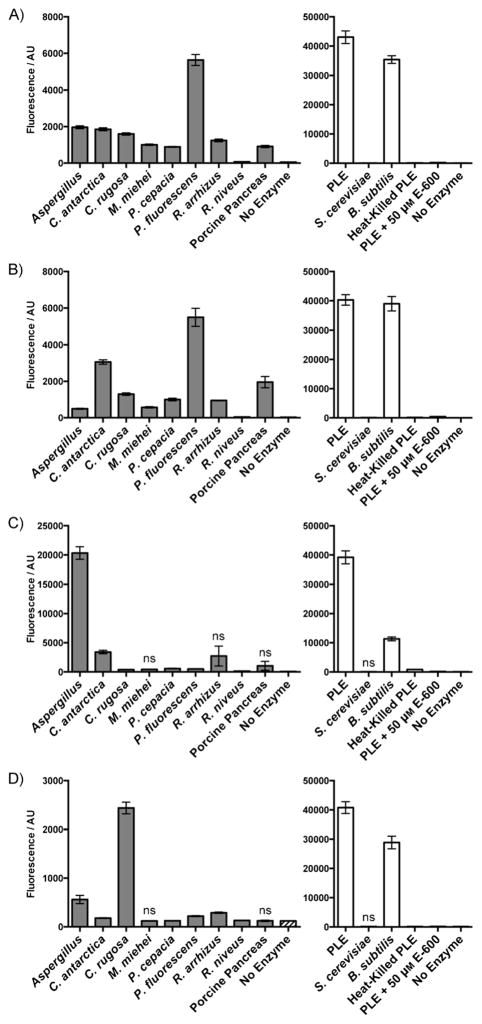Figure 2.
Fluorogenic esterase probes can be hydrolyzed by a variety of enzymes. A) 5 μM DDAO-AME 1 (DDAO: λex = 635, λem = 670). B) 5 μM DDAO-AME 2 (DDAO: λex = 635, λem = 670). C) 5 μM Res-AME (resorufin: λex = 550, λem = 600). D) 5 μM FDA (fluorescein: λex = 485, λem = 530). Enzymes (5 μg mL−1) were incubated with probe in 10 mM HEPES (pH 7.3) for 10 min at 37 °C. Probe cleavage was detected by an increase in fluorescence (in arbitrary units, AU) compared to the enzyme-free control. Lipases are indicated by gray bars, and esterases are indicated by white bars. Heat-killed PLE was prepared by heating the sample at 90 °C for 15 min. Inhibited enzyme was pre-incubated with 50 μM E-600 for 1 h at 37 °C prior to probe addition. The enzyme-free control is the same data set for both lipases and esterases. All unlabeled responses are statistically significant (P < 0.01). Reponses labeled “ns” are not significant compared to the enzyme-free control. Error bars represent one standard deviation; n =6.

